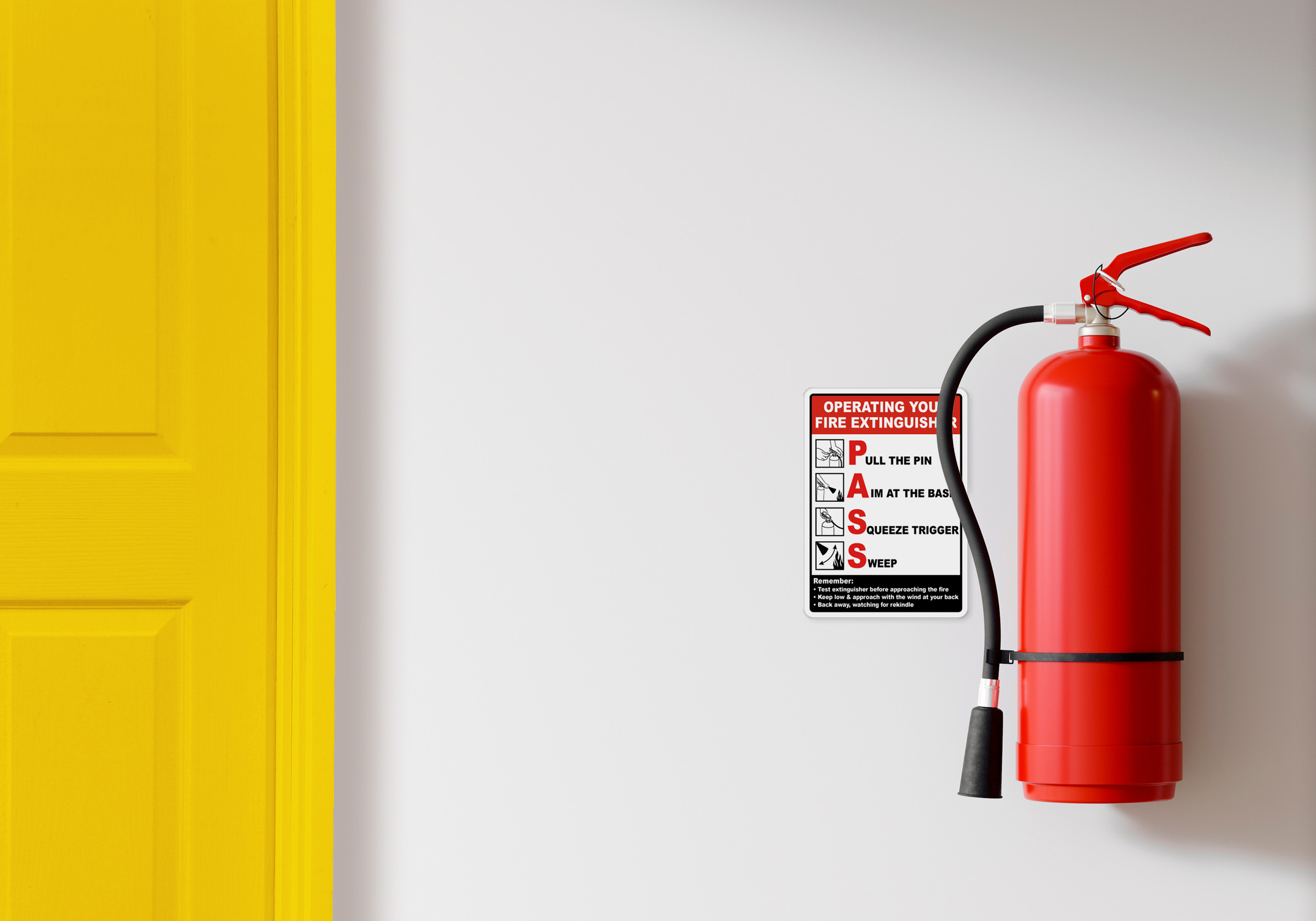We all want to ensure that our property, possessions, and family are secure.
Fire spreads rapidly and, because of this, quick action is critical if and when a fire breaks out. You are the first line of defense in stopping a fire, and fire extinguishers are the best tool at our disposal for promptly putting a stop to a blaze before it gets out of hand.
The PASS technique, step by step
Using a fire extinguisher effectively requires following a specific technique known as PASS: Pull, Aim, Squeeze, Sweep.
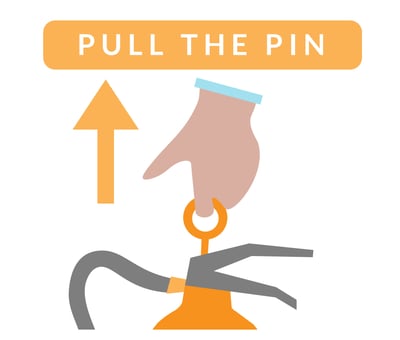
Start by pulling the pin located at the top of the extinguisher. This pin prevents accidental discharge.
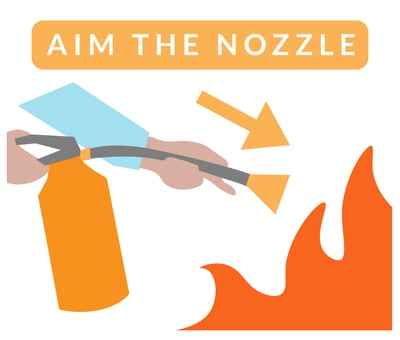
Aim the nozzle or hose at the base of the fire, not the flames. Focusing on the base is essential because it's where the fire's fuel source is located.
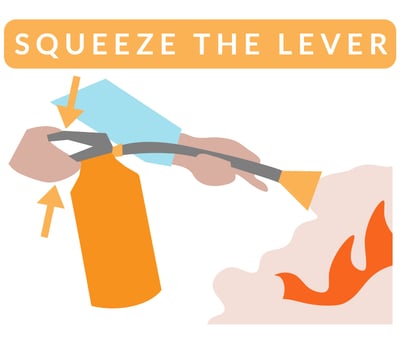
Squeeze the handle or trigger to release the extinguishing agent. Maintain a firm grip while doing this to ensure a steady flow of the extinguishing substance.
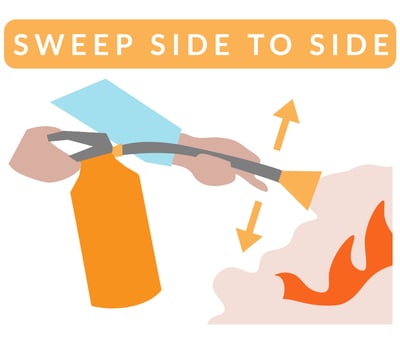
Begin sweeping from side to side, covering the entire base of the fire. Keep a safe distance while doing so and continue until the fire is extinguished. Be prepared for the possibility of the fire reigniting, so watch the area closely even after it appears to be out.
Additional tips for using fire extinguishers
Know your extinguisher
Different types of fires require specific types of extinguishers. Ensure you're using the correct extinguisher for the fire type.
Class A: Fires involving ordinary combustibles like wood, paper, cloth, rubber, and plastics.
Class B: Fires involving flammable liquids and gases such as gasoline, oil, grease, and propane.
Class C: Fires involving electrical equipment and appliances.
Class D: Fires involving combustible metals like magnesium, sodium, potassium, and titanium. These fires are relatively rare and typically occur in industrial settings.
Class K: Fires involving cooking oils and fats, commonly found in commercial kitchens.
ABC Dry Chemical Extinguishers: These can be used on Class A, B, and C fires. They contain a dry chemical powder that interrupts the chemical reaction of the fire.
BC Dry Chemical Extinguishers: Suitable for Class B and C fires, these extinguishers use a dry chemical to suppress fires involving flammable liquids and electrical equipment.
Purple K Extinguishers: Effective on Class B and C fires, these contain potassium bicarbonate and are often used in industrial settings.
The most common type of fire extinguisher for home use is typically an ABC dry chemical extinguisher. However, Class K extinguishers are good to keep on hand in the kitchen, as they are ideal for handling grease fires.
It's crucial to choose the right type of fire extinguisher for the specific hazards present in your environment. Proper training on the use of fire extinguishers and understanding the different classes of fires is essential for effective fire safety.
Check your extinguisher regularly
Inspect your fire extinguisher regularly to ensure it's in good working condition. Replace or recharge it as needed.
Maintain proper distance
Depending on the size of the blaze, stand an appropriate distance (6-8ft) away while using the extinguisher to avoid inhaling smoke and fumes.
Call for help
Even in situations where the fire seems to have been successfully extinguished, call your local fire department to seek further advice and determine if there are additional steps you need to take.
Using a fire extinguisher can be an intimidating experience, especially in a real-life emergency. It’s important to practice the PASS technique and familiarize yourself with the equipment you have; the more prepared you are, the better the potential outcome will be.




